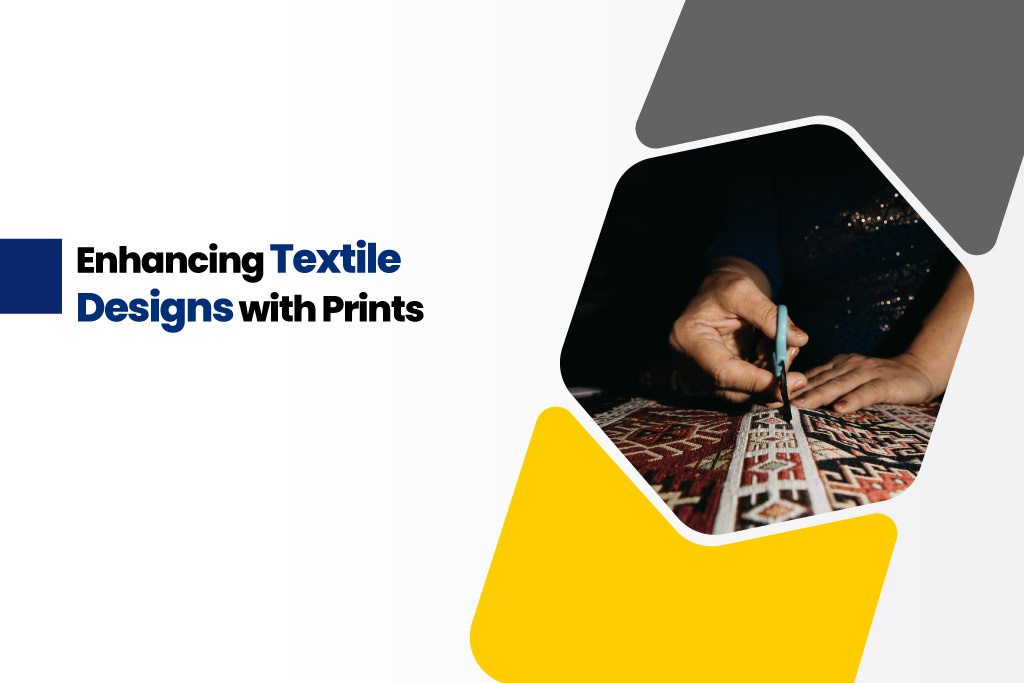In the fashion industry, textile design is an integral component. In addition to providing visual appeal, prints provide textile works personality and character. If you are a student from the Best Fashion Designing colleges in Tamil Nadu or a fashion designer hoping to capture the market with your works, then embrace beautiful prints in your textile designs. Designers need to understand the complexity of patterns and how they affect textile designs.
Prints in Textile Design
Patterns or designs applied to textiles using a variety of methods, including screen printing, digital printing, block printing and more are referred to as prints. From simple design patterns to elaborate designs, add more value to the fabric’s overall visual appearance. Prints give an extra appeal to the dress and thus grabbing the attention of the customers.
Types of Prints in the Fashion Industry
Screen Printing
Screen printing, also known as silk screening, is the widely used technique in the fashion industry. It involves creating a stencil of the design on a mesh screen with each color requiring a separate screen. This method uses vibrant colors and precise detailing that makes it ideal for both small-scale and large-scale industries.
Transfer Printing
Transfer printing involves transferring the required design from a printed paper onto fabric using heat and pressure. The design is first printed using dyes or specialized inks in a transfer paper and then heat is applied to transfer the design onto the fabric. This design is commonly used for creating complex design patterns where multiple colors are involved.
Floral Printing
Floral printing is a popular printing technique to print floral patterns onto the fabric. These prints give an aesthetic look to the fabric by adding delicate flower patterns or oversized bloom patterns. These floral designs are commonly used in feminine clothing as they are more fond of flowers which add a romantic touch to their clothes.
Block Printing
For centuries, block printing has been a popular choice by fashion designers. This method involves stamping designs onto the fabric using wooden blocks. For this, each wooden block is carved with a specific design and then ink is applied to the block to stamp the design on the fabric. These designs add a handmade touch to the clothes.
Dye Sublimation
Dye sublimation is a printing technique that involves transferring dye onto fabric using heat and pressure. The design is first printed on a special transfer paper with dye-sublimation inks, and then heat is used to transfer it to the fabric where the dye is absorbed and forms part of the fibers.
Digital Printing
Digital Printing involves printing the designs directly onto the fabric using digital inkjet printers. High-resolution printing with minute details and an infinite color palette can be achieved with this technology. B Des Fashion Design Colleges in Coimbatore equip students with the knowledge of this technology which will be useful for their career as a fashion designer. Custom T-shirts and other personalized clothing items are frequently made with it.
How textile designs are enhanced by prints?
Adds visual appeal
Prints give textile patterns more visual appeal which turns even the simple textile clothes into eye-catching works of art. Prints stimulate curiosity among customers with its captivating focal points like delicate florals or bold geometrics.
Adds a personal touch
Every print has a unique meaning and backstory which makes it easy for designers to add a personal touch to their works. Be it connecting with nature or infusing culture into fashion, prints tell a story that connects strongly with the customers.
Creating Versatility
Designers can be creative and experiment with their ideas with a wide range of color palettes and patterns with prints. This versatility enables them to create dresses for a wide range of preferences and occasions from casual daily wear to high fashion statements.
Enhancing Texture
Prints can improve fabrics’ sensual qualities by providing dimension and texture, in addition to their aesthetic value. The textural effects produced by methods like foil printing and embossing, enhance the fabric’s entire sensory experience.
How do fashion designers benefit from prints?
Differentiation
Prints help designers stand out from the competition and establish a unique brand in the market. They can create dedicated followers or customers by creating signature prints that complement their brand image.
Customization
Using prints as a canvas, designers can make their works more suited to particular clients or market niches. Whether you are making personalized pieces for a single customer or coming up with exclusive lines for stores, prints offer a flexible way to customize products.
Marketability
Eye-catching prints draw attention from both retailers and consumers making textile designs more marketable. Designers can boost sales by utilizing consumer demand and incorporating popular prints into their collections.
Collaborations
Prints provide access to chances for partnerships with professionals from the top 10 fashion designing colleges in Coimbatore, enhancing the design process and broadening the designer’s network. Collaborative projects create awareness and publicity for the business in addition to offering new perspectives on textile designs.
With countless opportunities for expression and creativity, prints are an effective technique for boosting the visual looks of fabric designs. From adding visual interest to reflecting trends and benefiting fashion designers, prints play a vital role in shaping the fashion landscape. Designers from the best Fashion Designing College in Coimbatore are able to elevate their products and capture audiences with distinctive textile patterns, utilizing the transformational power of prints.






